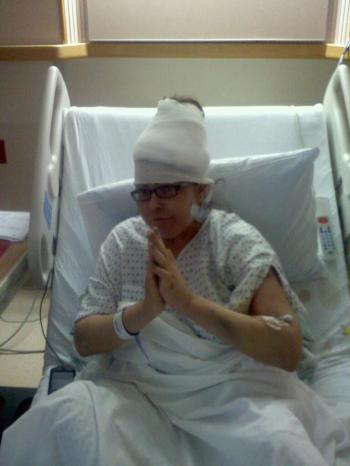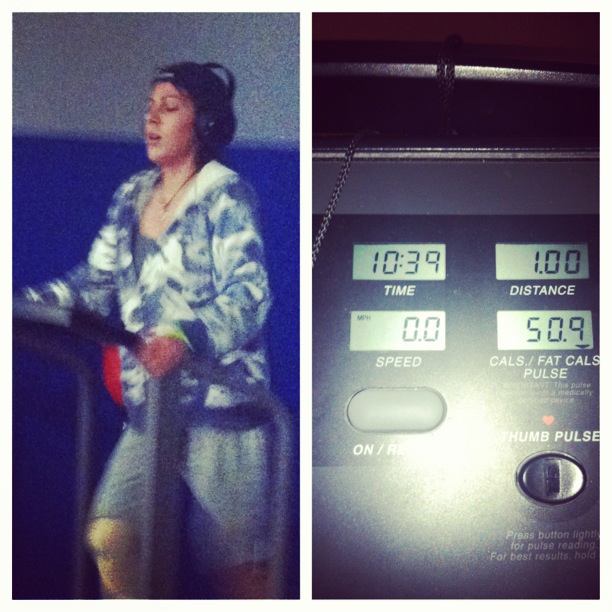This was my speech prepared for the Liver Life Walk Kick-Off Event, at Harbor Point in Stamford, CT.
As Rocky Balboa once said, “You, me, or nobody is gonna hit as hard as life.”
I have been an athlete and seemingly healthy all of my life. I graduated with my BA in Communication Studies in 2007 from Furman University, in Greenville, SC on a full-ride to play Division 1 Women’s Golf. In March of 2012, five years later, I was still living in Greenville, SC in the midst of making a transition to St. Augustine, FL. I know plans can sometimes change suddenly, but I could never in my life envisioned how drastically my plans were about to change. No one could have!
In March of 2012, I was diagnosed with end-stage liver failure and I somehow had to digest that I might only have a couple of months to live and that my ONLY hope of survival was in getting a liver transplant. I never imagined having to deal with anything of this magnitude at only age 26, so I called my Aunt Caryn, because she always knows the right thing to say to me. “Aunt Caryn, I have been diagnosed with this rare disease that only 1 in a million people get, my liver is failing, and I need a liver transplant to survive.” Calmly, she responded, “Monique. Only one in a million people can play golf as well as you. You are going to have to take that focus you learned from golf and use it to getting better. You’re going to need a strong mind because you’re going to be fighting for your life.” My aunt said she would be there for me, and we could accomplish anything together, so from that moment on, I put on my game face, ready to brave this life-threatening challenge as best as I could.”
Everything happened so rapidly from there on out, and within a week my aunt and my cousin Rocco flew down from CT, picked me up in my car in SC, and we drove back up to CT. A week after I arrived in CT, I had my first liver evaluation at Yale-New Haven and was admitted to the transplant program on the spot. Within one week of being admitted to Yale hospital, I suffered internal bleeding, and I lost my pulse four times.
While the internal bleeding almost killed me, it did shoot me to the top of the transplant waiting list. The average wait time is 361 days for a liver, but on May 3rd 2012, not even two days after I was officially put on the transplant waiting list, I was a recipient of a matching liver! It was a phenomenon, but even before I got the chance to really celebrate this miracle, I had developed an extremely rare, extremely fatal fungal infection in my brain called invasive aspergellus. Invasive aspergellus in the brain has nearly a 100% mortality rate for immunosuppressed patients, so my only option for survival was to have a very risky brain surgery to remove the abscess. The surgical team was unable to remove the entire abscess out on the first attempt, so almost three weeks later I was under the knife again for an even riskier brain surgery. Imagine having three major life-saving surgeries in a matter of five weeks’ time–my body felt like I had been plowed over by a speeding Greyhound bus!
After spending most of the spring of 2012 in the hospital, I was finally discharged on June 14th to my grandparent’s house. While this was a huge day for me, I was still not off the hook, as a trace of the infection remained. A PICC line was put into my arm, so for 6+ hours a night, 7 days a week, I was on a very aggressive IV treatment of an anti-fungal agent called Amphotericin B. The Ampho is a very toxic agent, and my kidneys could only tolerate the drug for 7 weeks before it was causing too much harm. FINALLY, on August 3, 2012 I had the PICC line removed out of my arm and it was adios Ampho and hola road to recovery!
My family was informed that even if I did survive the multiple brain surgeries, there was a pretty good chance I could come out of surgery deaf, blind, paralyzed, or worst of all, dead. I definitely didn’t come out deaf, (even though sometimes I might wish I was deaf so I wouldn’t have to hear my loud Italian family, JK J). I am far from paralyzed. With a lot of hard work, I went from being bed-ridden and extremely weak to running my first 5K in May in 33:44:66. I am not completely blind. I did lose my peripheral vision to the right in both of my eyes from my multiple brain surgeries and can no longer drive a car, but that hasn’t stopped me from driving a golf ball as I just recently participated in the American Liver Foundation’s Charity Golf Tournament in July, where I won the long drive contest for the females. A few days later I shot a round of 80 from the white tees at Candlewood CC. Most importantly, I am not dead. My body, my mind, my emotions, and my soul went through so much in such a short period of time, but I have worked very hard physically, mentally, emotionally, and spiritually to get to where I am today, and because of that I am very much alive–perhaps the most alive and healthiest I ever been in my life!
Somehow, to medical disbelief, I am a survivor. Why? Well I don’t know exactly why, but I can tell you this. I had a very impressive medical team at Yale who was doing everything within their power to make sure I was leaving that hospital alive. I can’t go without saying I have the most amazing friends who even though most of them live 800 miles away from me, they checked in on me daily, sent me cards, and flowers, and gifts, and some of my friends even came to visit me from afar. My family was incredible. Every single day out of the 52 days I was at Yale, at least one (but usually more than one) member of my family made the hour long trip to Yale to be with me. I honestly wouldn’t be alive today if it wasn’t for my aunt Caryn and everything she has done for me, especially instilling in me that those one-in-a-million odds I was labeled with didn’t mean one-in-a-million victim, it meant one-in-a-million survivor.
Throughout this whole journey I had so many people believing in me. When you have an army of people supportive of you, constantly telling you that you are a fighter, that you’ve got this, you start to believe it. I was like Rocky Balboa, only I was in the ring battling death. Round after round I kept fighting, and fighting and like Rocky, every time I got knocked down, I got right back up. The verdict may not have ended in a knock-out, but what is most important is that I prevailed, and I am a survivor.
One year ago was the true beginning of my recovery, and now, by just looking at me, you would no idea I had a life-saving liver transplant or survived a deadly infection in my brain! I am living proof of a miracle, but that miracle wouldn’t be possible without the advances made in medicine over the past couple of decades. One-in-ten Americans (30 million) are currently living with liver disease, and anybody can be that “one,” and you never know when it could be you. That is why it is very important for us to come together and become educated about liver disease, raise awareness, and most importantly support the American Liver Foundation and Team “Just Say Mo” at the Liver Life Walk of Fairfield County! (For for more information about supporting me and my team “Just Say Mo” at the Liver Life Walk this year please visit this link.
I want you to remember, “Life ain’t about how hard ya hit. It’s about how hard you can get hit and keep moving forward. ” ~Rocky Balboa








